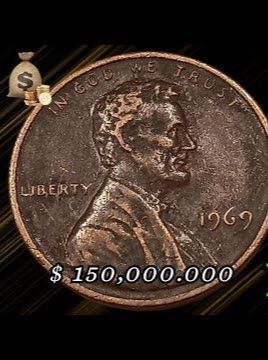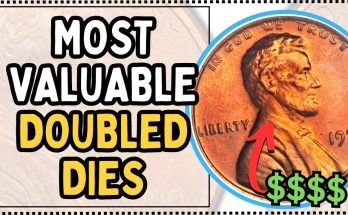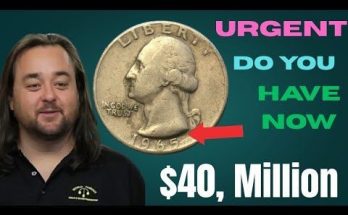The search for rare and valuable Lincoln pennies is a thrilling hobby for coin collectors, with some error coins still rumored to be found in everyday circulation. The Lincoln Cent, first minted in 1909, has a rich history that includes several significant minting errors that have led to astronomical values for certain specimens.
Here are some of the most valuable and sought-after Lincoln pennies, many of which owe their value to rare errors:
The Holy Grail: The 1943 Copper Lincoln Cent
During World War II, the U.S. Mint switched the penny’s composition from copper to zinc-coated steel to save copper for the war effort. However, a small number of 1943 pennies were accidentally struck on the leftover copper planchets.
- Rarity and Value: Fewer than 20 of these copper error coins are known to exist. Uncirculated examples have sold for over $1 million, with some pieces (including those from the Denver ‘D’ and San Francisco ‘S’ Mints) valued as high as $1.7 million to $2.5 million or more.
- How to Check: A genuine 1943 copper cent will not stick to a magnet, unlike the common steel version, and should weigh approximately 3.11 grams.
Doubled Die Errors: The “Double Vision” Pennies
A “doubled die” error occurs when the hub—the tool used to create the coin’s die—strikes the die multiple times at a slightly different angle, resulting in a distinct, doubled image. The clarity and extent of this doubling directly affect the coin’s value.
- 1955 Doubled Die Obverse (DDO): This is one of the most famous and recognizable U.S. coin errors. It shows dramatic doubling of the date (“1955”) and the lettering (“LIBERTY” and “IN GOD WE TRUST”) on the front of the coin. Even circulated examples can sell for $1,000 to over $1,500, with higher-grade pieces reaching $20,000 or more.
- 1969-S Doubled Die Obverse (DDO): Considered much rarer than the 1955 DDO, this variety is characterized by clear doubling on the date and all obverse lettering. There are fewer than 50 known specimens. Uncirculated examples have auction records reaching over $126,000, with even lightly circulated coins valued at $10,000 or more.
Key Date and Transitional Rarities
Some valuable Lincoln pennies are not errors but rather “key date” coins—those with extremely low mintages—or transitional pieces made during a change in composition.
- 1909-S VDB Lincoln Cent: This coin is famous as the very first year of the Lincoln Cent, which includes the designer Victor David Brenner’s initials (“VDB”) on the reverse. The San Francisco mint produced a very limited number. Values for this iconic coin range from a few hundred dollars for low-grade examples to over $10,000 for uncirculated pieces.
- 1982 Copper Small Date Cent: The U.S. Mint began switching from a 95% copper alloy to a copper-plated zinc composition in 1982. Among the multiple varieties that year (Large Date and Small Date in both copper and zinc), the 1982 Small Date copper penny from the Philadelphia Mint is exceptionally rare. Top-graded examples have sold for thousands, with one key specimen (the 1982-D Small Date copper cent, often referred to as the Malone specimen) selling for over $18,800.
Other Valuable Error Types to Seek
The coin-collecting world is full of other valuable errors that can appear on Lincoln Pennies from various years:
- Clipped Planchet: A curved or crescent-shaped piece is missing from the coin’s edge, an error that occurs when the metal strip overlaps during the punching of planchets.
- Off-Center Strike: The design is partially absent because the coin was not positioned correctly during striking. A 40-60% off-center strike is highly sought after by collectors.
- 1992-D Close AM: This variety has the letters “A” and “M” in the word “AMERICA” on the reverse set very close together, a feature meant for the 1993 reverse die. This subtle difference can make a coin worth up to $3,525 or more.
Final Advice for Coin Hunters
The stories of finding these high-value coins in circulation are the inspiration for every collector. If you suspect you’ve found one of these rare pieces, do not attempt to clean it, as cleaning can drastically reduce the value. Instead, protect the coin and seek professional authentication and grading from services like PCGS or NGC to confirm its authenticity and maximum value. Your everyday pocket change truly could hold a small fortune!



